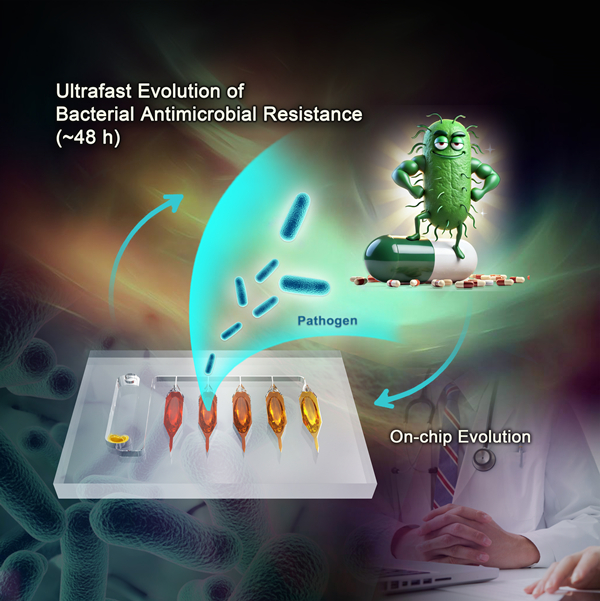A team of researchers from the Single-Cell Center at the Qingdao Institute of Bioenergy and Bioprocess Technology of the Chinese Academy of Sciences, along with collaborators, have developed a microfluidic system to tackle antimicrobial resistance (AMR). Operating at the picoliter scale, the system condenses billions of bacterial cells into a confined microenvironment, accelerating the experimental evolution of resistance.
This study, published in Analytical Chemistry, demonstrates how this system enables resistance to develop within 48 hours—an improvement over traditional methods that require weeks or even months.

Ultra-fast Microfluidics Experimental Evolution System (Image by LIU Yang)
Conventional methods of studying bacterial resistance are slow, labor-intensive, and inefficient. Using centrifugal microfluidic to concentrate bacteria to an unprecedented density of 1012cells/mL, the system creates a high-stress environment that accelerates bacterial adaptation.
This study demonstrated that the system effectively supports the growth and proliferation of Escherichia coli, Klebsiella pneumoniae, and Staphylococcus aureus when exposed to triclosan, ciprofloxacin, and amikacin at concentrations 10-20 times higher than the initial minimum inhibitory concentration (MIC). After 48 hours of cultivation, the MIC of the experimental strains increased by up to 128-fold.
The researchers also employed RNA sequencing and Raman spectroscopy to explore bacterial responses to antimicrobial stress. They found that high-density bacterial aggregates rapidly activated quorum sensing—a sophisticated communication system that promoted survival strategies such as biofilm formation and metabolic shifts.
"High-density conditions trigger unique genetic and behavioral responses," said Prof. MA Bo from Single-Cell Center, a co-corresponding author of this study.
This study holds potential for practical applications. Its high-throughput capabilities allow for rapid screening of antibiotics and biocides, reducing the time and resources required for drug discovery, and thus may enhance the efficacy of antimicrobial treatments.